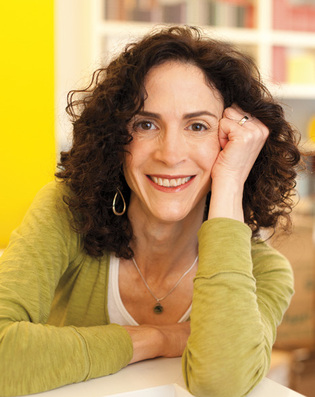 loading
loading
Where They Are NowDrawn from lifeAn alumna finds a novel in her struggle with bipolar disorder.  Julie BrownJuliann Garey ’88 tapped into her own experience of bipolar disorder—and the imagined childhood of her father, who was also probably bipolar—in writing her debut novel, which appears in December. View full image
Juliann Garey ’88 was 39 when the drugs keeping her bipolar disorder in check stopped working. Much of Too Bright to Hear Too Loud to See, her debut novel from Soho Press, was written during the seven-year odyssey of drug trials, specialists, and increasingly severe episodes that followed, before her condition was more or less stabilized a year ago. It’s the story of Greyson Todd, a Hollywood executive with bipolar disorder who abandons his family and roams the globe for a decade. The book cuts back and forth across Greyson’s life, from his childhood to the psych ward where he undergoes electroconvulsive therapy (ECT). Garey lives in New York with her husband and two teenaged children. Y: It sounds like writing this book was a pretty immediate process for you. G: There were times when I was manic, and I wrote a scene where [Greyson] was also manic. In that sense, that part of it is not fiction. Other parts of it I did a lot of research for, because I’ve never been to Bangkok; I’ve never been to Kenya or Uganda. And some of it is an extreme, fictionalized riff on my father’s childhood. Because my father committed suicide when I was 16, and I don’t know what his childhood was like. Y: Had your father been diagnosed? G: My father was not. He was the last person on earth anyone would have expected to commit suicide. But we believe that he was misdiagnosed and treated with antidepressants, had one severe manic episode, and that was all it took. In retrospect, everyone thinks he probably had bipolar disorder. Y: Is there a broader history of it in your family? G: There have been five suicides in two generations in my family. My paternal grandmother had five brothers; three of them committed suicide. I don’t know if that’s equal to the Wittgensteins, but we’re close. Y: How did you come up with the book’s structure? G: I started with one short story about his childhood, and then another and another. Then I imagined what that boy would be like as an adult. I just kept writing, but I could not come up with a structure. And then I was hospitalized in 2009. The doctor I was seeing insisted that I needed ECT. Fortunately, they turned me down as a candidate, because I’m a writer and rely on my memory. But while I was in the hospital, I looked around at the ECT patients and I thought, well, this might be a good structure for the book. Y: I wanted to ask about that scene in Kampala, where he has a really severe episode— G: Where he stabs himself with the fish fork. That’s the scene I usually do at readings. The bees that he talks about hearing—that is something I felt. It was not like, “I’m feeling really sad today,” or “I’m feeling really overly caffeinated.” It’s like you have shards of glass running through your veins. I literally felt there was a hive of bees inside. It’s a physical feeling of sickness. And I’m so far from it now. It’s like what they say about childbirth—you forget how painful it was. Y: You’ve said you were worried about your kids’ reaction to the book. Why? G: I worried that it would be upsetting to them. It’s one thing if somebody else had written it. But that their mother had written it is something else. But I think they’re old enough to read it now. They’re pretty well read and sophisticated. They can handle it.
The comment period has expired.
|
|